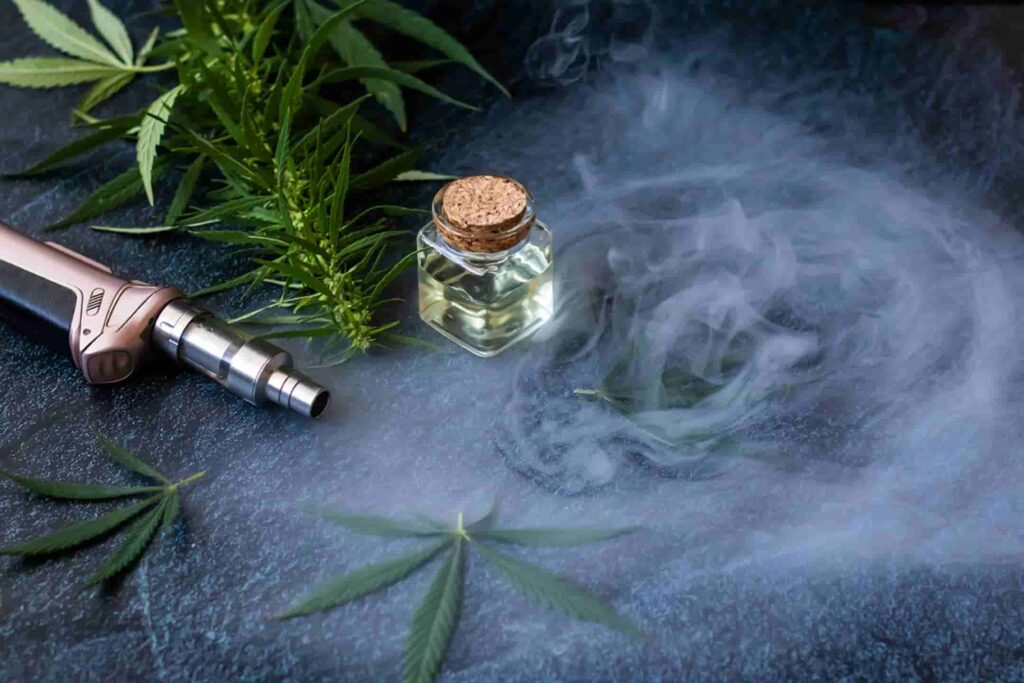Unveiling the Choice: Smoking vs. Vaping Medical Marijuana for Optimal Health and Efficacy
Medical marijuana has emerged as a pivotal option for various health conditions, prompting patients and healthcare providers to explore the most effective consumption methods. This therapy is different from many others in that there are numerous ways to consume the therapy. Smoking and vaping are two popular methods, each carrying its own set of advantages and drawbacks. But, when considering smoking versus vaping, which is safer and better? This in-depth analysis aims to shed light on the nuances between smoking and vaping medical marijuana, empowering individuals to make informed choices based on their health needs and preferences.
1. Health Implications: A Closer Look at Inhaling Methods
Smoking: The Risks of Combustion
Smoking marijuana involves the combustion of plant material, releasing a complex mixture of gases and particles. This combustion process generates potentially harmful byproducts, including tar and carcinogens. These substances, when inhaled, can irritate the respiratory system. The heat from smoking may lead to bronchial irritation and chronic bronchitis, characterized by persistent coughing and increased mucus production. Over time, repeated exposure to smoke may contribute to the development of respiratory issues and compromise lung function.
Vaping: A Breath of Fresh Air?
In contrast, vaping operates at lower temperatures, avoiding the combustion associated with smoking. Vaporizers heat the marijuana to a point where active compounds are released as a vapor without reaching the point of combustion. This significantly reduces the production of harmful byproducts, offering a potentially safer alternative for lung health. While research on the long-term effects of inhaling vaporized substances is ongoing, preliminary evidence suggests that vaping may present a less detrimental impact on the respiratory system compared to smoking.
Considerations for Lung Health:
Understanding the specific effects on lung health is crucial for individuals considering medical marijuana use. Smoking, with its combustion-related risks, may not be the ideal choice for those with pre-existing respiratory conditions or concerns about long-term lung health. Vaping, by minimizing exposure to harmful byproducts, appears to be a more favorable option in terms of respiratory well-being. However, it is essential to note that individual responses to smoking and vaping can vary, and consultation with a healthcare professional is recommended to make an informed decision based on personal health considerations.
2. Efficiency in Cannabinoid Delivery: Maximizing Therapeutic Benefits
Smoking: The High-Temperature Conundrum
Smoking exposes marijuana to high temperatures during combustion, which may result in the loss of certain cannabinoids and terpenes. This raises questions about the overall efficiency of marijuana delivery and whether the potential benefits are compromised by the high-temperature process.
Vaping: Precision in Activation
Vaping devices provide users with more control over temperature settings, allowing for precise activation of cannabinoids. This controlled approach aims to maximize therapeutic benefits by ensuring a more efficient delivery of active compounds. Understanding these nuances can significantly impact the overall effectiveness of medical marijuana as a treatment.
3. Dosage Control: Navigating the Dose Dilemma
Smoking: Challenges in Precision
Smoking marijuana poses challenges in achieving precise dosage control. Factors such as uneven burning and inhalation patterns can lead to variations in the amount of marijuana consumed, making it difficult for patients to consistently administer a specific dose.
Vaping: Technology Meets Accuracy
Vaping technology offers a solution to the dosage dilemma. Users can select specific temperatures, and the availability of pre-filled cartridges with known concentrations enhances the ability to control and manage intake accurately. This technological advancement addresses a critical aspect of medical marijuana use—ensuring that patients receive the intended therapeutic dosage.
4. Onset of Effects: Balancing Speed and Consistency
Smoking: The Quick Relief Approach
One notable advantage of smoking is the rapid onset of effects. The combustion process allows for quick absorption of cannabinoids, providing almost immediate relief for patients dealing with conditions such as pain or nausea.
Vaping: Striking a Balance
While vaping may not offer the instantaneous effects associated with smoking, it still provides a relatively quick delivery of cannabinoids. Although marginal, the difference in onset time is an essential consideration for patients seeking a balance between speed and consistency in therapeutic relief.
5. Taste and Aroma: Exploring Sensory Pleasures
Smoking: The Classic Flavor Adventure
Smoking introduces a unique taste and aroma associated with the combustion process. For individuals who appreciate the traditional aspects of marijuana consumption, the flavor adventure offered by smoking may be a significant factor in their preference.
Vaping: Preserving Nature’s Goodness
Vaping, with its lower temperatures, tends to preserve the natural flavors and aromas of marijuana more effectively. The breakdown of terpenes is minimized, enhancing the overall taste experience for users. This sensory advantage adds another dimension to the vaping experience.
Conclusion: Navigating the Maze of Choices
In conclusion, the choice between smoking and vaping medical marijuana is nuanced, influenced by factors ranging from health considerations and efficiency in cannabinoid delivery to dosage control, onset of effects, and sensory experiences. Each method has its merits and drawbacks, catering to diverse preferences and medical needs.
As individuals navigate this maze of choices, it’s crucial to recognize that the decision between smoking and vaping is highly personal. Consultation with healthcare professionals becomes paramount, allowing patients to align their consumption method with their specific medical requirements and overall well-being.

Dr. Nicholas Marsh has been a respected board-certified anesthesiologist in Northern Virginia for over 35 years. Recognized as a top doctor by FindaTopDoc.com, his vision for providing top-quality medical services is driven by his passion for patient comfort and dignity.

